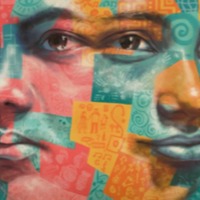
Kidane
There is an estimated 48,000 people living in modern slavery in Libya (GSI 2018). Libya is a major transit destination for migrants and refugees hoping to reach Europe by sea. Human trafficking networks have prospered amid lawlessness, created by the warring militias that have been fighting for control of territories since the toppling of Muammar Gaddafi in 2011. Highly organized trafficking and migrants smuggling networks that reach into Libya from Niger, Nigeria, Chad, Eritrea, Ethiopia, Somalia, Sudan, and other sub-Saharan states subject migrants to forced labor and forced prostitution through fraudulent recruitment, confiscation of identity and travel documents, withholding or non-payment of wages, debt bondage, and verbal, physical, and sexual abuse. In some cases, migrants reportedly pay smuggling fees to reach Tripoli, but once they cross the Libyan border they are sometimes abandoned in southern cities or the desert where they are susceptible to severe forms of abuse and human trafficking. Kidane traveled from Eritrea to Europe through smugglers, however he found himself trafficked by brokers and being locked inside a warehouse for two years. After being released from the trafficker’s camp, he and two friends, Abraham and Berhane, decided to cross the sea together. They were put out to sea in an old wooden boat that was leaking. They were three days at sea, with no food and no water to drink. Some of the passengers died. Today, the three friends are earnestly advising other people not to go on this dangerous journey. They say enough is enough, irregular travel through Libya should stop now.
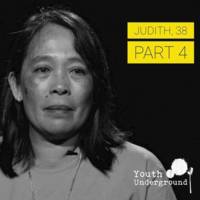
Judith
There are an estimated 403,000 people living in conditions of modern slavery in the United States (GSI 2018). The US attracts migrants and refugees who are particularly at risk of vulnerability to human trafficking. Trafficking victims often responding to fraudulent offers of employment in the US migrate willingly and are subsequently subjected to conditions of involuntary servitude in industries such as forced labour and commercial sexual exploitation. Judith travelled from the Philippines to New York in 2005 to work as a domestic worker. Instead of the eight-hour working day she was promised, Judith was forced to work up to eighteen hours a day, seven days a week for little pay. Her passport was confiscated, and she was told not to tell anyone about her situation. She was finally able to escape in 2007 while the family was out of the house.
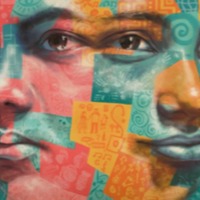
Esosa
There are an estimated 1,386,000 people living in modern slavery in Nigeria (GSI 2018). Nigeria is a source, transit, and destination country for women and children subjected to forced labour and sex trafficking, and a source country for men subjected to forced labour. Women and girls are victims of forced labour in domestic service both within the country as well as being trafficked to other West and Central African countries. Esosa experienced trafficking and domestic servitude in Nigeria. She was then able to return to school and went on to study theatre arts at university. She is now a professional dancer and performer. Esosa supports anti-trafficking efforts in her community, including through NGO Y, by choreographing performances to raise awareness of the dangers of irregular migration.
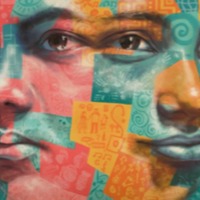
Shin Dong Hyuk (Narrative 2)
The Global Slavery Index 2018 estimates that there are 2,640,000 people living in conditions of modern slavery in The Democratic People’s Republic of Korea (North Korea). Men, women and children are subjected to forced labour and sex trafficking. Government oppression in the DPRK prompts many North Koreans to flee the country in ways that make them vulnerable to human trafficking in destination countries. Many of the estimated 10 000 North Korean women and girls who have migrated illegally to China to flee abuse and human rights violation are particularly vulnerable to trafficking. Some lure, drug, detain or kidnap North Korean women on their arrival, others offer jobs but subsequently force the women into prostitution, domestic service, or forced marriage. If found, Chinese authorities often repatriate victims back to the DPRK where they are subjected to harsh punishment including forced labour in labour camps or death. Shin Dong Hyuk was born in a North Korean prison labour camp in 1982. He tells of his experience growing up in the camp and being forced to work from a very young age. In the camp, food was restricted and beatings were common, by both prison officers and Shin Dong’s own mother. When he was fourteen, Shin Dong’s mother and brother attempted to escape the camp. He was forced to watch their execution and tortured himself for presumped involvement in their escape. In late 2004 Shin Dong was partnered with a man who had seen the outside world and they began to plan their own escape. In January 2005, they escaped while collecting firewood, however Shin Dong was the only one to succeed.
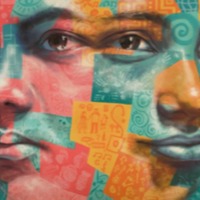
Mbarek B
There are an estimated 90,000 people living in modern slavey in Mauritania (GSI 2018). Mauritania is one of the last countries in the world where people are still born into hereditary slavery, which means they are literally owned by other people, and forced to work for masters their entire lives. People in slavery come from the Haratine ethnic group, historically enslaved by White Moors. They can be bought and sold, or given as gifts, and face a lifetime of exploitation and abuse. Rape of female slaves is common and their children also become slaves. They are Muslims, and many believe that it is Allah’s wish for them to be enslaved because they are told that their paradise is bound to their Master. In reality, Islam dictates that a Muslim cannot enslave a fellow Muslim. Since 2007 slavery has been criminalised in Mauritania but the law is not enforced and the government is reluctant to acknowledge the existence of the problem. Mbareck ould Mahmoud was born into inherited slavery in 1970. Shared among different families, Mbareck was forced to live as a nomadic shepherd as well as performing domestic work. Mbareck and his sister were subjected to physical violence and often had their food restricted. He notes how some families were more lenient than others, some allowing him and his sister to go to Qoranic school while others threatened him if he ever went again. Mbareck notes how his life changed when someone who had previously escaped slavery visited the village and told him and his sister that they could do the same. After escaping and returning to their father, Mbareck began working odd jobs at a cinema for a small sum of money. Mbarek later became an Islamic preacher.
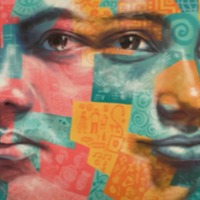
Ram
There are an estimated 610,000 people living in conditions of modern slavery in Thailand (GSI 2018). The country is a source, destination and transit country for men, women and children subjected to forced labour and sex trafficking. Thailand’s commercial sex indusrty remains vast, increasing vulnerabilities for sex trafficking. Children are victims of sex trafficking in brothels, massage parlours, bars, karaoke lounges, hotels and private residences. People are trafficked from other Southeast Asian countries, Sri Lanka, Russia, Uzbekistan and some African countries. It is also a transit country for people from China, North Korea, Bangladesh, India and Burma. Ram ran away from an abusive home and was forced to live on the streets. One day while stealing food from a local market, Ram was kidnapped by a street gang. Ram was forced to steal from tourists during the day and at night was sold for sex to older men. Ram’s exploitation finally came to an end when his trafficker was arrested.
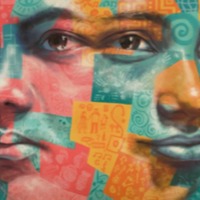
Ratree
There are an estimated 610,000 people living in conditions of modern slavery in Thailand (GSI 2018). The country is a source, destination and transit country for men, women and children subjected to forced labour and sex trafficking. Thailand’s commercial sex indusrty remains vast, increasing vulnerabilities for sex trafficking. Children are victims of sex trafficking in brothels, massage parlours, bars, karaoke lounges, hotels and private residences. People are trafficked from other Southeast Asian countries, Sri Lanka, Russia, Uzbekistan and some African countries. It is also a transit country for people from China, North Korea, Bangladesh, India and Burma. Ratree left her home village in Thailand at the age of 13 to look for work. She found a job working for a woman in a hotel, however the work turned out to be not how she had imagined. Ratree was forced to have sex with older men, subjected to sexual violence and rape daily. Ratree’s exploitation was finally ended when undercover police performed a raid on the hotel.
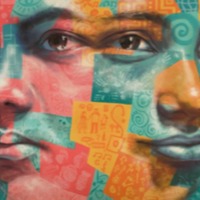
Choi MA
The Global Slavery Index 2018 estimates that there are 2,640,000 people living in conditions of modern slavery in The Democratic People’s Republic of Korea (North Korea). Men, women and children are subjected to forced labour and sex trafficking. Government oppression in the DPRK prompts many North Koreans to flee the country in ways that make them vulnerable to human trafficking in destination countries. Many of the estimated 10 000 North Korean women and girls who have migrated illegally to China to flee abuse and human rights violation are particularly vulnerable to trafficking. Some lure, drug, detain or kidnap North Korean women on their arrival, others offer jobs but subsequently force the women into prostitution, domestic service, or forced marriage. If found, Chinese authorities often repatriate victims back to the DPRK where they are subjected to harsh punishment including forced labour in labour camps or death. Choi MA crossed the border into China with a friend in 2001 after being swindled out of her money by a fisherman. Upon arrival, they were both sold to a farmer by a Chinese family they had asked for help. After living a year at this place Choi MA escaped and worked as a house and restaurant helper. Later she was arrested by the police. In April 2004 Choi MA was repatriated to North Korea but managed to escape for a second time in October 2004. Eventually she was able to make it to South Korea.
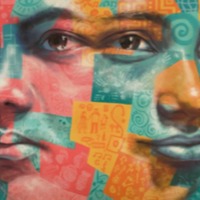
Jin Hae Jo
The Global Slavery Index 2018 estimates that there are 2,640,000 people living in conditions of modern slavery in The Democratic People’s Republic of Korea (North Korea). Men, women and children are subjected to forced labour and sex trafficking. Government oppression in the DPRK prompts many North Koreans to flee the country in ways that make them vulnerable to human trafficking in destination countries. Many of the estimated 10 000 North Korean women and girls who have migrated illegally to China to flee abuse and human rights violation are particularly vulnerable to trafficking. Some lure, drug, detain or kidnap North Korean women on their arrival, others offer jobs but subsequently force the women into prostitution, domestic service, or forced marriage. If found, Chinese authorities often repatriate victims back to the DPRK where they are subjected to harsh punishment including forced labour in labour camps or death.Jin Hae Jo was forcibly repatriated back to North Korea from China. She tells of how many North Korean women fall victim to traffickers in China as they leave to help their starving families.
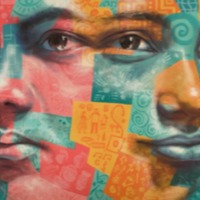
Shadrack
In 1993, Burundi’s first democratically elected president was assassinated in a coup d’état. Melchior Ndadaye, of the majority Hutu ethnic group, had sought during his three months in office to ease tensions between Hutu and the minority Tutsi, which had ruled Burundi for decades and continued to dominate the army. In response, Hutu paramilitary groups formed, and as quid pro quo attacks between Hutu and Tutsi escalated, Burundi spiraled into civil war.Among the many victims of the war were children. Indignant over Ndadaye’s death and the denial of political power the Hutu believed their due, extremist factions exhorted teenagers and even younger children to join their ranks, and for more than a decade, thousands of children lived in Burundi’s forests in deplorable conditions, raiding villages, camps, and military installations, both suffering and committing horrific violence. Many were girls kept as sexual slaves for older soldiers. Shadrack joined the FNL rebellion after the army came to his village and killed a number of his relatives and neighbours, he was 13 years old. Shadrack tells of his experience as a child soldier and how he came to leave the rebellion.
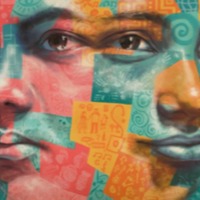
David Ninteretse
In 1993, Burundi’s first democratically elected president was assassinated in a coup d’état. Melchior Ndadaye, of the majority Hutu ethnic group, had sought during his three months in office to ease tensions between Hutu and the minority Tutsi, which had ruled Burundi for decades and continued to dominate the army. In response, Hutu paramilitary groups formed, and as quid pro quo attacks between Hutu and Tutsi escalated, Burundi spiraled into civil war.Among the many victims of the war were children. Indignant over Ndadaye’s death and the denial of political power the Hutu believed their due, extremist factions exhorted teenagers and even younger children to join their ranks, and for more than a decade, thousands of children lived in Burundi’s forests in deplorable conditions, raiding villages, camps, and military installations, both suffering and committing horrific violence. Many were girls kept as sexual slaves for older soldiers David became involved in the Burundi Democratic Youth when he was 15 years old. After the coup in 1993, he became a Hutu child soldier, David tells of the hunger and abuse he faced as a child soldier as he was forced to walk barefoot for days with little food and water. David tells of his experience as a child soldier, his attempts to gain an education to become a political leader, and his retirement.
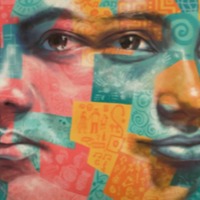
Elias
There are an estimated 451,000 people living in modern slavery in Eritrea (GSI 2018). The small country has a unique system of compulsory, open-ended military service for citizens that makes it one of the most oppressive states in the world. The government has enforced its current policy of sending all secondary school students to serve for a minimum of twelve months since 2003. While Eritrean law puts the minimum conscription age at 18, many teenagers find themselves recruited during high school at age 16 or even younger. In rural areas, where formal education is rarer, the army will visit villages to round up young girls and boys who look roughly of age, to begin their program of combat training and forced labour. Elias was 15 years old when he was imprisoned for attempting to flee Eritrea. He was then sent to a military training camp where he tells of the starvation and beatings he and other children endured. Elias was finally able to escape and leave the country.
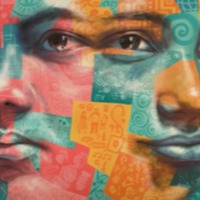
Haile
There are an estimated 451,000 people living in modern slavery in Eritrea (GSI 2018). The small country has a unique system of compulsory, open-ended military service for citizens that makes it one of the most oppressive states in the world. The government has enforced its current policy of sending all secondary school students to serve for a minimum of twelve months since 2003. While Eritrean law puts the minimum conscription age at 18, many teenagers find themselves recruited during high school at age 16 or even younger. In rural areas, where formal education is rarer, the army will visit villages to round up young girls and boys who look roughly of age, to begin their program of combat training and forced labour. Haile was 17 years old when he was taken for military training. He recalls the other minors in the training camp with him and how they were subjected to physical abuse and suffered from a lack of food.
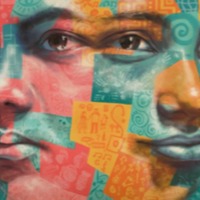
Hiwot
There are an estimated 451,000 people living in modern slavery in Eritrea (GSI 2018). The small country has a unique system of compulsory, open-ended military service for citizens that makes it one of the most oppressive states in the world. The government has enforced its current policy of sending all secondary school students to serve for a minimum of twelve months since 2003. While Eritrean law puts the minimum conscription age at 18, many teenagers find themselves recruited during high school at age 16 or even younger. In rural areas, where formal education is rarer, the army will visit villages to round up young girls and boys who look roughly of age, to begin their program of combat training and forced labour. Hiwot was taken to a military training camp when she was 17 years old. She was subjected to starvation, rape and beatings for six months until her parents came looking for her and brought documentation to prove she was not yet 18.
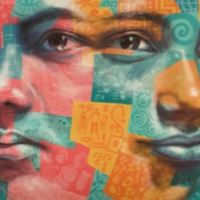
Byaombe
There are an estimated 1,045,000 people living in conditions of modern slavery in the Democratic Republic of Congo (GSI 2018). In 2016 several armed groups continued to abduct and forcibly recruit men, women and children as combatants and in support roles such as guards, cleaners, cooks and spies. In 2016, 184 cases of child soldiers were reported, with 1,662 children reported to have separated or escaped from armed groups. Child soldiers who manage to escape remain vulnerable to re-recruitment as adequate rehabilitation services remain unavailable to children suffering trauma, stigmatisation and the continued threat of armed groups. Byaombe tells of his experience of being a child soldier for the FDD militia in the Democratic Republic of Congo. He tells of how he was taught to kill, how he was given drugs and how there was little food or shelter at the military camp.
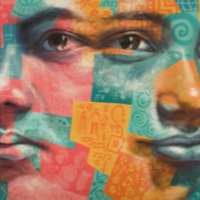
Naik
The Global Slavery Index 2018 estimates that on any given day there were nearly 8 million people living in modern slavery in India. While the bonded labour system is formally abolished and criminalised, recent research indicated that bonded labour is still prevalent in India. A 2016 report found that in the state of Tamil Nadu, 351 of 743 spinning mills used bonded labour schemes, otherwise known as Sumangali schemes. Similarly in granite quarries, wage advances and loans with an interest ranging from 24% to 36% are used to bond workers. Situations of debt bondage are often aggravated by the need to raise emergency funds or take on loans for health crises. Naik worked as a bonded labourer for 10 years in Uttar Pradesh after he inherited his father’s debt. He tells of how the bonded labour system has changed, the effect of government schemes and how labourers are now often invited in to their landlord’s houses and to eat and drink from the same plates and glasses.
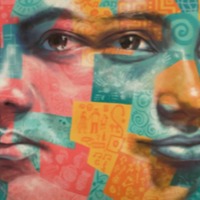
Atal
The Global Slavery Index 2018 estimates that on any given day there were nearly 8 million people living in modern slavery in India. While the bonded labour system is formally abolished and criminalised, recent research indicated that bonded labour is still prevalent in India. A 2016 report found that in the state of Tamil Nadu, 351 of 743 spinning mills used bonded labour schemes, otherwise known as Sumangali schemes. Similarly in granite quarries, wage advances and loans with an interest ranging from 24% to 36% are used to bond workers. Situations of debt bondage are often aggravated by the need to raise emergency funds or take on loans for health crises. Atal works as a bonded labourer in Uttar Pradesh. He tells of the difference between his and his father’s time, the restrictions placed on him due to his caste and how it is almost impossible to ever pay off borrowed debt. He also tells of how he once stood for election in his community in an attempt to obtain justice for bonded labourers.
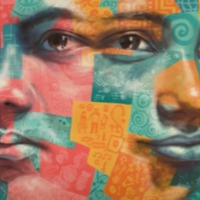
HA
There are an estimated 31,000 people living in condition of modern slavery in Israel (GSI 2018). Women from Eastern Europe, China and Ghana, as well as Eritream men and women are subjected to sex trafficking in Israel. People are often lured through the promise of seemingly legitimate jobs, only to be subjected to commercial sexual exploitation upon arrival. HA was living in Uzbekistan when her husband stopped bringing food for her and her baby. Thinking she would be undertaking cleaning work, HA accepted a job in Israel, however upon arrival she was sold into prostitution.
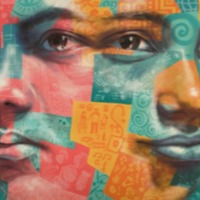
Eedamma
It is estimated that almost 8 million people are living in conditions of modern slavery in India (GSI 2018). The skewed sex ratio in some regions of India has fuelled the trafficking and selling of women and young girls as brides within India. Women are reportedly sold off into marriage by their families, sometimes at a young age, and end up enduring severe abuse, rape and exploitation by their husbands. It is also reported that women and girls from impoverished backgrounds have been lured by promises of marriage by younger men from urban areas, then forced into sex work once married. Eedamma was married at 13 years old to a bonded labourer of a different caste. Since her marriage, she has been subjected to physical abuse daily and has food restricted. As a result, she ran away from her in-laws back home.
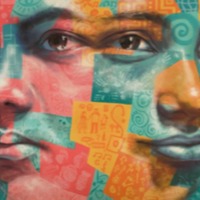
Turalpati Lakshmi
It is estimated that almost 8 million people are living in conditions of modern slavery in India (GSI 2018). The skewed sex ratio in some regions of India has fuelled the trafficking and selling of women and young girls as brides within India. Women are reportedly sold off into marriage by their families, sometimes at a young age, and end up enduring severe abuse, rape and exploitation by their husbands. It is also reported that women and girls from impoverished backgrounds have been lured by promises of marriage by younger men from urban areas, then forced into sex work once married. Turalpati Lakshmi was 12 years old when she was forced to marry a boy the same age. She is now pregnant and faces hunger and lack of health care.